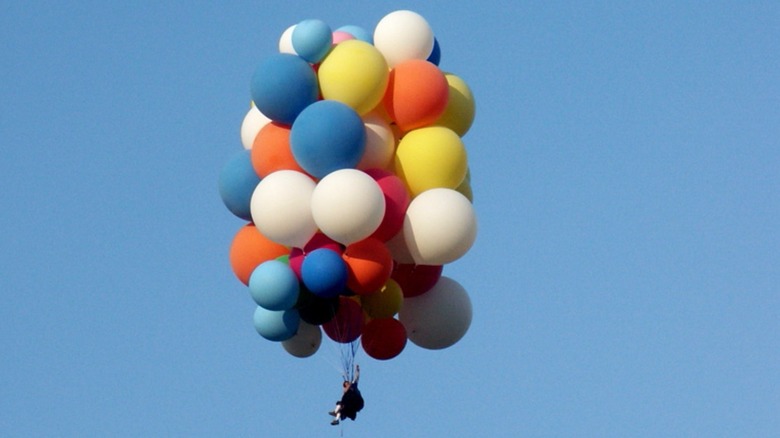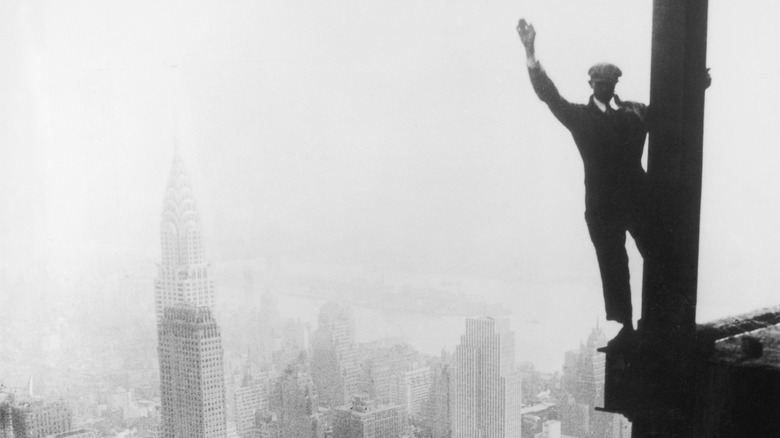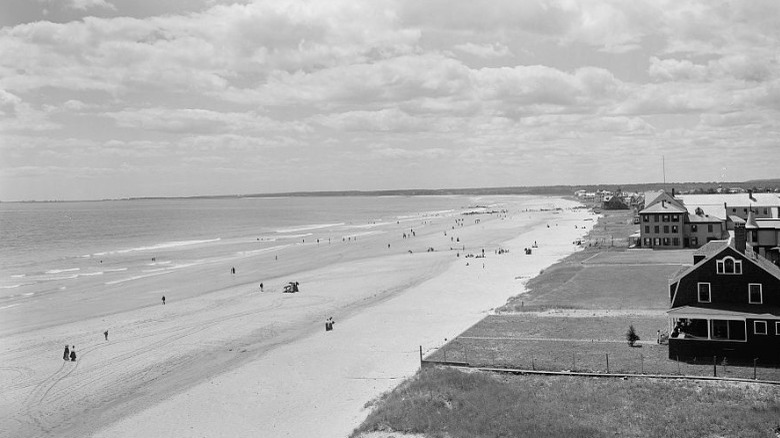The 'Unscheduled' 1937 Balloon Ascent Of Adventurous Photographer Al Mingalone
Human beings have been using balloons as a means of transport since the first manned hot air balloon ride took place on November 21, 1783, at the Chateau de la Muette of Paris, France, per Seattle Ballooning. "Cluster ballooning," (shown above), as defined by History of Ballooning, involves a single person attached to a cluster of helium balloons via harness or seat, as opposed to sitting in a basket, who then floats into the air with no other means of controlling the flight outside of deflating some of the balloons or via ballast. Larry Walters, also known as "Lawnchair Larry," made news and history in 1982 when he launched his homemade aircraft made up of an aluminum lawn chair and 42 helium-filled weather balloons and managed to float 16,000 feet in the air over Los Angeles before using a BB gun to control his descent, as reported by the Smithsonian's National Air and Space Museum.
However, the technique has much earlier roots and may have been invented by notorious news cameraperson Al Mingalone in 1937. Mingalone was well known for his daredevil antics and dangerous stunts, all in the name of getting just the right shot. In an article about the news cameramen entitled "Playfellows of Death" that ran in the October 1934 issue of Modern Screen magazine (via Lantern), Robert Eichberg wrote of a Mingalone adventure in which he "drove across Cuba with two of the revolutionary students" and "shared a back seat with enough ammunition to run a full-sized war."
Anything for a good shot
As reported by Colorized, Al Mingalone also made a name for himself when he hired a skater to hold him as he spun near the edge of the Empire State Building, presumably to get a one-of-a-kind result that no one else would dare position themselves to shoot. (Above, a worker poses on an Empire State Building girder during its construction, which took place between 1930 and 1931.) He also reportedly held onto the edge of a submarine as it submerged. We can assume this was also one of his daring, dangerous filming projects. According to Sloan Science and Film, he owned a 1925 Parvo camera now housed at the Museum of the Moving Image. An identical Parvo camera was also used by underwater film pioneer Jean Painleve. It's possible that Mingalone brought his own waterproofed Parvo along on that submarine stunt.
On September 28, 1937, just a few short months after the Hindenburg disaster (which Mingalone witnessed while working as a cameraperson for Paramount News, according to "Motion Picture Photography: A History, 1891-1960"), he decided to attempt to lift himself over the Old Orchard Seacoast golf course in Maine. According to the 1978 book "Great News Photos and the Stories Behind Them," he did so in order to get a desired shot for a feature on "house-hopping with weather balloons." Originally attached to 28 weather balloons, he could only hit a ceiling of 25 feet, but he still needed more height.
A different kind of shot saved Mingalone
Fellow photographer Phil Coolidge added five more balloons and a 200-foot-long rope which he tied to a car bumper. Unfortunately, per "Great News Photos and the Stories Behind Them," when Al Mingalone reached the end of the rope, it snapped, sending him soaring into the air. Bystander Father James Mullen witnessed the accidental takeoff, grabbed a rifle brought along to the scene in case of an emergency, and jumped into a car with Coolidge to follow the balloons. Mingalone later recounted his experience (via "Great News Photos and the Stories Behind Them"): "A sudden squall struck. I was jerked backwards and dropped to the end of my harness. My camera fell free. Having lost 12 pounds of ballast, I shot skyward again...I must have been about 700 feet off the ground. After nearly an hour had gone by, I saw the car. I heard a ping. Then another. There was a hissing sound. I began to descend."
Mingalone floated over 13 miles from the golf course. Mullen shot twice at the balloons, hitting three of them and bringing Mingalone back to earth. His camera was found undamaged, and the film he shot while floating over Maine was named "Best Domestic Newsreel Scene of the Year" by the National Headliners Club. In November 1937, a Camel cigarettes ad featuring Mingalone as a spokesperson ran in Life magazine. In what may have been a sly reference to his ballooning stunt, his quote reads in part, "When I'm tired, I get a 'lift' with a Camel."


